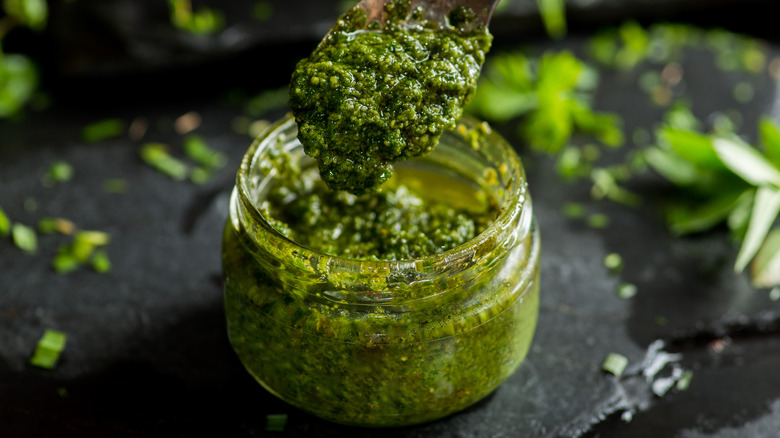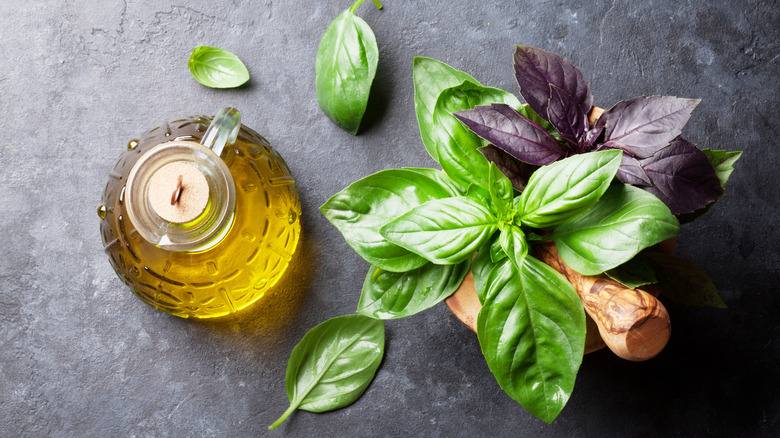The Easy Trick That Will Prevent Your Pesto From Turning Brown
Who doesn't love pesto? Hailing from the northwestern Italian region of Liguria, according to Saveur, the rich, oily condiment used to dress pastas and spread over pizzas and sandwiches is traditionally a mix of crushed basil, pine nuts, garlic, parmesan, and olive oil. These days, there are lots of versions of pesto — from those based on other herbs such as cilantro as well as varieties featuring leafy vegetables like kale — but there's something about the basil original that remains extra appealing.
If you've made basil pesto at home, you've probably experienced the disappointing reality of your freshly prepared, bright green sauce dulling almost immediately, whether you've ground it by hand in a mortar and pestle, as is the traditional way, or pulsed it together in a food processor. According to Cook's Illustrated, delicate basil leaves oxidize very easily, turning darker or even brown as they get exposed to air. So what's a cook who wants to serve a bright green pesto to do?
Cap your pesto with a generous layer of olive oil
To keep your freshly made, bright green basil pesto from turning an unappealing shade of brown, you can turn to a trick employed by plenty of cooks and grab one of your bottles of good olive oil. Once your pesto is done, transfer it to as small a container as it will fit in — to reduce the sauce's exposure to too much air — and then pour a generous cap of olive oil over the top. According to Allrecipes, the layer of fat will prevent any air from reaching the torn basil leaves, which won't oxidize and will therefore maintain their appealing green hue.
Another method for making bright green pesto is to blanch the basil leaves before stirring them into your sauce. While this step of briefly submerging the fresh basil in boiling water before shocking it in an ice bath and proceeding with the recipe will add a few minutes to your prep time, it's well worth it. According to Cook's Illustrated, blanching the leaves deactivates the enzyme that causes them to oxidize when they're exposed to air. Whichever method you choose, you'll be left with a bright green sauce that will leave your pizzas and pastas as attractive as they are tasty.

